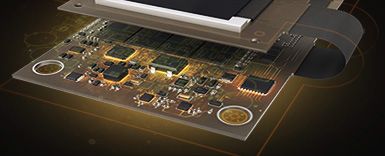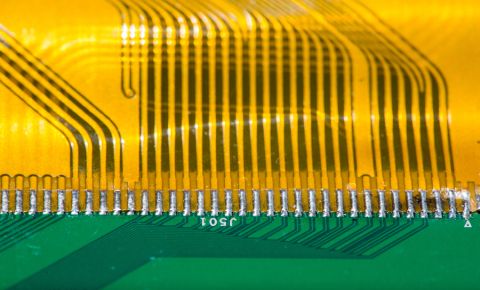Wearable Design: Why Fashion, Function and PCB Form Factor Matter

Today’s best wearables are smart, but more than that – they’re stylish, personal and seamlessly woven into daily life. Whether it’s a fitness tracker, a medical monitor or a next-gen AR headset, success depends on blending style, functionality and ease of use into designs people want to live with.
For PCB designers and mechanical engineers, that means rethinking everything from layout to materials. A successful wearable isn't defined by how small it is – it’s measured by how naturally it fits the user’s needs, lifestyle and routines.
New technologies are helping engineers rise to the challenge. With structural electronics and advanced PCB design tools like Altium, you can now create products that are not only compact and capable, but stylish and truly wearable.
Fashion Isn't Optional
Consumer adoption of wearable technology is driven as much by aesthetics as by performance. This rise of fashionable technology is reshaping user expectations, making visual appeal and comfort just as critical as technical capabilities. Devices must feel natural, complement a range of personal styles and avoid looking like cumbersome tech add-ons.
Rings are a trending form factor. Consider devices like the Samsung Galaxy Ring, with its polished titanium finish and week-long battery life, or Casio’s smart ring, which blends retro design with new notification functionality, or Oura Ring 4, a sleek smart ring with comprehensive health monitoring capabilities. All are examples of how materials, shape and minimalism make the technology invisible and the product stylish.
Even for specialized devices, the form factor influences adoption. A fall detection pendant that looks like jewelry or an ECG monitor disguised as a wristwatch are far more likely to be worn daily than something that screams “medical device.”
Why Functionality Can't Be Sacrificed
A wearable’s elegance doesn’t excuse technical shortcomings. In fact, the challenge of great wearable design lies in maintaining or even improving performance while shrinking and refining the package.
Engineers must navigate:
- Battery placement and thermal management in ultra-compact spaces
- Reliable wireless communication despite size constraints
- Sensor accuracy in constantly moving environments
- User interface access without resorting to screens or cluttered controls
Rigid-flex PCB design plays a crucial role here, allowing electronic assemblies to bend around anatomical shapes or fit into ergonomic enclosures without adding unnecessary volume. But even rigid-flex has limitations, which is where newer structural electronics approaches enter the scene.
Structural Electronics: New Possibilities
Techniques for structural electronics, including in-mold structural electronics (IMSE) and 3D-MID (Three-Dimensional Mechatronic Integrated Devices), are breaking free from the flat PCB model. Circuits are now being printed or integrated directly into the structural parts of the device, including cases and bands of fashionable technology.
From a recent OnTrack PCB Design Podcast on Structural Electronics in Altium, product manager Jack Henriques explained, "Structural electronics is basically any type of electronics that isn’t the standard flat FR4 PCB. It’s about combining electrical functionality with mechanical or physical attributes, like making the casing itself part of the circuit."
This advancement is reshaping wearable design. Engineers can now follow the natural contours of the body, embed antennas seamlessly into bands and casings, and create capacitive touch areas across flexible surfaces — all while eliminating bulky interconnects and reducing assembly complexity.
The result goes beyond thinner or lighter products. It represents a design philosophy where electronics are no longer confined to boards but disappear into the product structure itself.
Redefining PCB Form Factors for Wearables
In traditional designs, PCBs set strict boundaries on product shape and feel. In wearables, that model is flipping – form factor now follows the user, not the board. Engineers are reshaping devices to be lighter, more ergonomic and better aligned with real-world movement. Today’s wearable designers are:
- Adopting multi-board and modular systems to distribute functionality across a device
- Leveraging ultra-thin substrates and embedded passives to minimize footprint
- Using curved PCB segments to match product ergonomics
In structural designs, engineers no longer need to drill vias through rigid layers to create circuit crossovers. Instead, printed electronics layer stacks use printed dielectric insulation, enabling cleaner, faster routing across curved or flexible surfaces. This approach simplifies manufacturing and expands the design possibilities for curved and flexible wearables.
Moreover, with Altium’s latest capabilities, designers can:
- Place components on curved surfaces natively
- Run full design rule checks (DRCs) on structural layouts
- Import and update 3D mechanical models without redoing the electrical layout
As Jack Henriques noted in the podcast, “A lot of the time, the circuit layout is started before the mechanical substrate design is finished. Previously, if your substrate mechanical design changed, you needed to re-import it and start your layout again from scratch. But now we have the ability to update the substrate file, keeping the layout intact – which is very useful and very powerful.”
It’s a change whose time has come: electrical design and industrial design happening side by side as a single continuous process, not sequentially.
Watch the full podcast episode below.
Fashion-Forward Wearables
Wearable technology is evolving beyond function into forms that are personal, stylish and seamlessly integrated into everyday life. Earlier, we saw how smart rings are capturing attention and winning users. Here are examples of four different form factors where fashion and function are converging:
- Motorola Moto Buds Loop – Ear buds that look like earrings, combining Bose sound engineering with Swarovski crystal design jewelry.
- Adobe x Christian Cowan Primrose Garment – A reconfigurable fashion piece showcasing ambient lighting and dynamic display surfaces embedded in fabric.
- Louis Vuitton Tambour Horizon Light Up Watch – A luxury smartwatch that merges traditional craftsmanship with customizable displays.
- Totwoo Smart Bracelets – Fashion-forward smart jewelry for discreet communication, activity tracking and emotional connection.
These examples of fashionable technology show products with visual appeal and seamless technology integration – devices that are attractive, intuitive and fully integrated into daily life.
Rethinking the Engineer’s Role
As wearable technology advances, the role of engineers is expanding. Success demands both technical precision and cross-disciplinary collaboration to balance form, function and manufacturability. Leading engineering teams now work closely with:
- Industrial designers for seamless aesthetics
- Material scientists for wearable-grade device enclosures
- Mechanical engineers for flexing and folding geometries
- Manufacturing teams for new assembly techniques
New structural electronics capabilities are critical enablers, helping to bridge these worlds. Electrical and mechanical teams can now prototype, validate and iterate together — reducing guesswork, accelerating development and ensuring design and functionality stay aligned from concept to production.
Designing for the Future We Wear
The next wave of fashionable technology is about embedding intelligence, connection and care into the things people already live with and trust. Engineers who embrace this will be creating a new generation of human-centered technology that’s intuitive, personal and built for real life.
With tools like Altium, teams are uniting performance, comfort and beauty into seamless, wearable experiences. The future belongs to designs that move with us, understand us and feel as natural as the lives we lead. Learn how Altium helps bring next-generation wearable designs to life.










